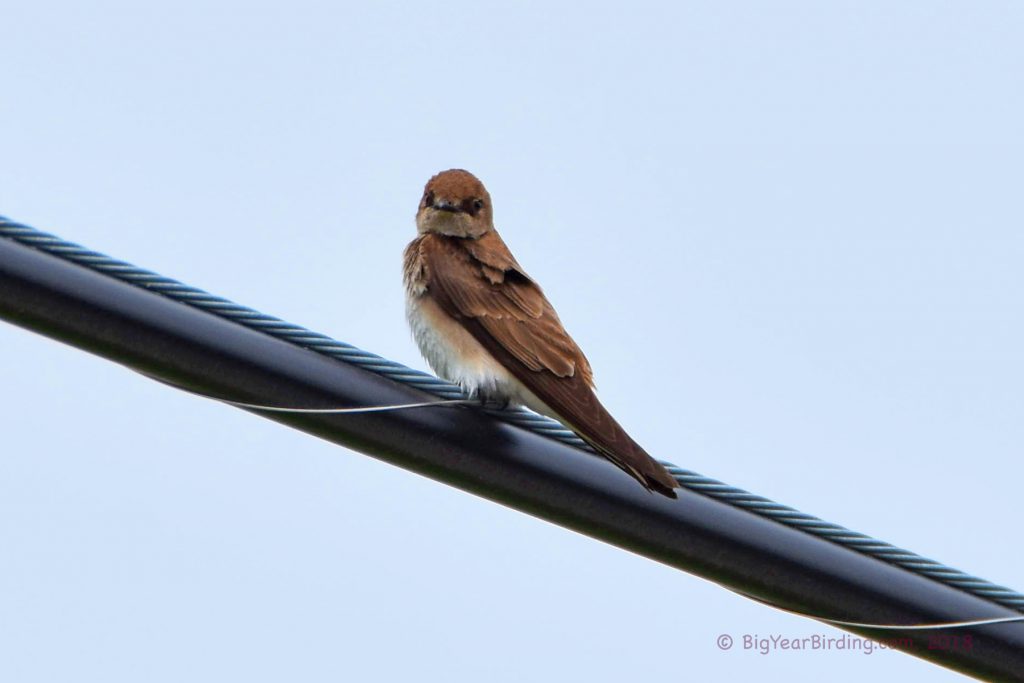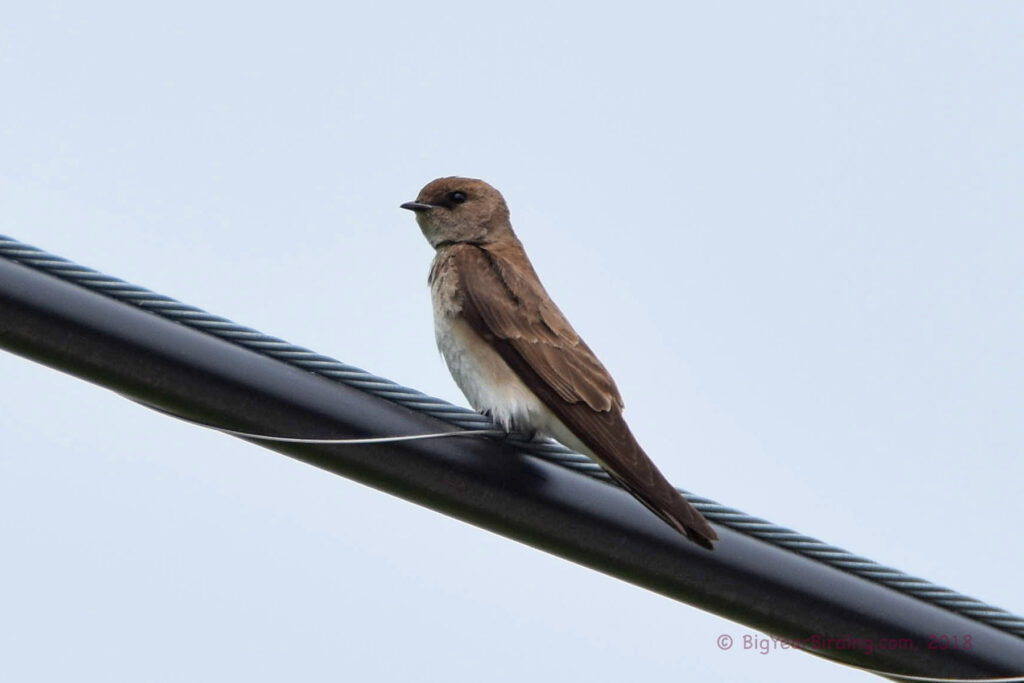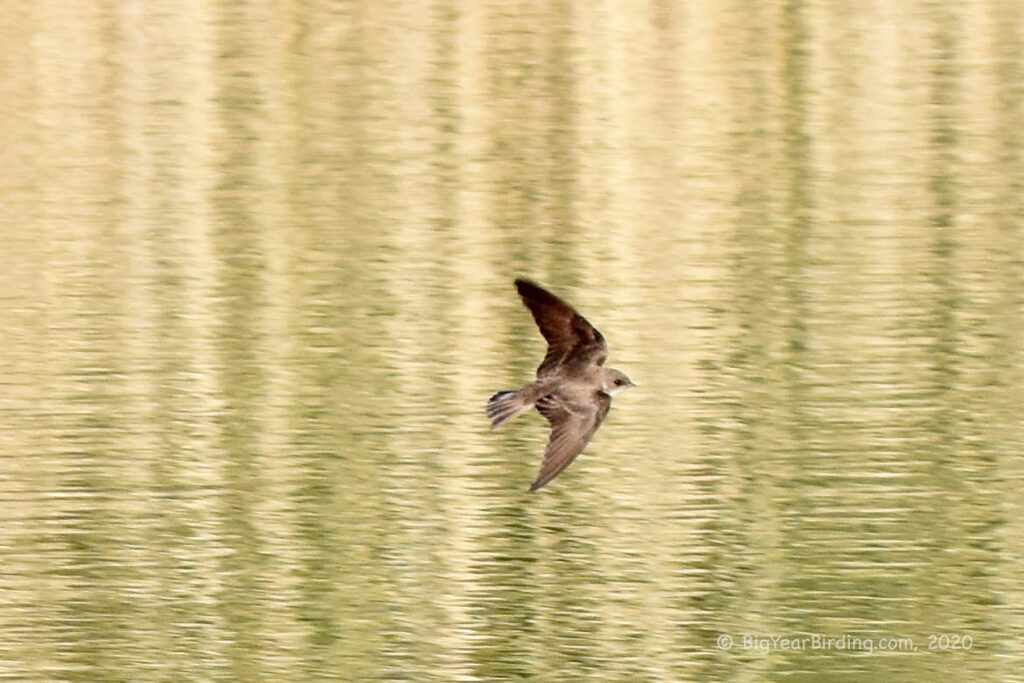
The Northern Rough-winged Swallow (Stelgidopteryx serripennis) is a small passerine bird that belongs to the family Hirundinidae. It measures between 5.5 to 6 inches in length, with a wingspan of 12 to 13 inches. It has a weight of approximately 0.5 to 0.6 ounces. The Northern Rough-winged Swallow is a plain-looking bird, with brownish-gray upperparts and a paler underbody. It has a slightly forked tail, which is often difficult to see in the field. Its most distinguishing field mark is its wings, which have tiny hooks or barbs along the leading edge.

The Northern Rough-winged Swallow is a migratory bird that breeds in North America, from Alaska and Canada southward to Mexico and the Caribbean. It is found in a variety of habitats, including open woodlands, grasslands, marshes, and along rivers and streams. During the winter months, it migrates to Central and South America, where it can be found in open habitats such as savannas, scrublands, and agricultural fields.
During the breeding season, the Northern Rough-winged Swallow is often found nesting in burrows or crevices in cliffs or riverbanks. It constructs its nest out of grasses, twigs, and feathers, and lines it with softer materials such as moss and animal hair. The female typically lays between 4 to 6 eggs, which are incubated for approximately two weeks. Both parents participate in raising the young, which fledge after approximately three weeks.
The Northern Rough-winged Swallow is an insectivore, and feeds primarily on flying insects such as mosquitoes, flies, and beetles. It catches its prey in mid-air, often in acrobatic flights close to the ground or over water. Unlike many other swallows, the Northern Rough-winged Swallow does not often perch on wires or other structures.

Overall, the Northern Rough-winged Swallow is a common and widespread species that is easily overlooked due to its plain appearance. However, its unique wing structure and acrobatic flight make it a fascinating bird to observe. Its migratory habits also make it an important indicator of environmental change, as changes in its breeding or wintering ranges can indicate shifts in climate or habitat availability.

